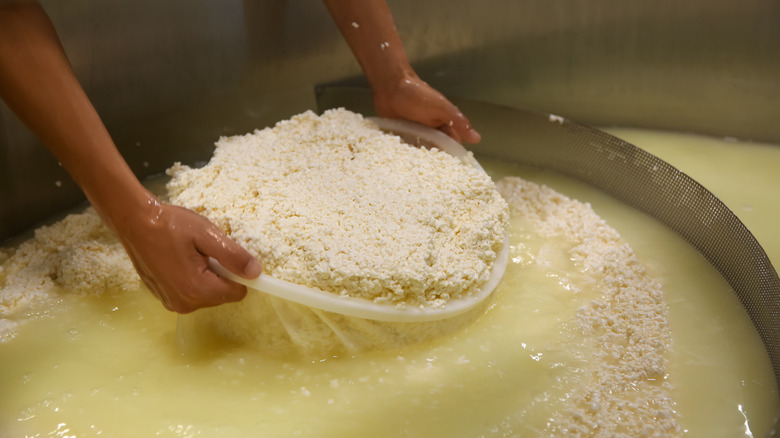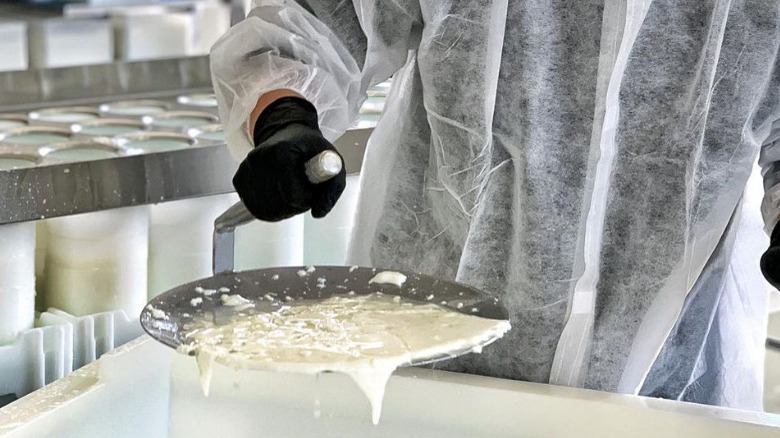What Actually Is Curds And Whey?
As far as nursery rhymes go, "Little Miss Muffet" is tame. Sure, when its protagonist sits down on a tuffet — that's an old-fashioned version of a floor pouf — to eat her curds and whey, things don't go exactly as planned. But it's not like she ends up imprisoned by her husband in a pumpkin shell like the wife in "Peter Peter Pumpkin Eater." Nor does she end up with her head on a spike like Jack and Jill, whose walk "up the hill" has been speculated by some historians to represent the 1793 guillotining of the deposed French king and queen, Louis XVI and Marie Antoinette.
Nevertheless, as the story goes, the young Miss Muffet was just minding her own business when her meal of curds and whey was interrupted by a "spider who sat down beside her," causing her to flee the scene, presumably, still hungry. Some regard "Little Miss Muffet" as a cautionary tale, warning children that no good will come from overreacting to minor stimuli like a house spider, which is, in fact, usually harmless. Others believe it pokes fun at the 16th-century entomologist, Thomas Muffet, for bringing his work home with him in the form of pet spiders and silkworms.
Today's kids might be inclined to view Miss Muffet's tale as an excuse to eschew cottage cheese, which is the modern-day slightly more-processed version of curds and whey. Indeed, that actually dovetails with the science behind what curds and whey really is.
Curds and whey: nutritious but not pretty
Curds and whey is the product of the coagulation of milk, i.e., clotting to become semi-solid, upon exposure to an acid such as lemon juice, vinegar, or rennet — an animal-based enzyme commonly used in cheesemaking. Curds are the lumpy solids formed from the resulting clumping of milk proteins. Whey is the remaining liquid. More specifically, curds are comprised of about 25 percent casein protein, 30 percent milk fat, and various vitamins and minerals, including calcium, potassium, and vitamins A, D, B6, and B12. And whey is about 90 percent water, but it's also rich in whey protein, lactose, calcium, and vitamins B1, B2, and B6.
Today's cottage cheese — which is widely regarded as a nutritional powerhouse — is simply a processed version of curds and whey. In the 16th century, when historians believe the real Miss Muffet lived, a bowl of curds and whey would have offered all the nutritional benefits of milk. But with the added bonus of being in semi-solid form, which would offer a "greater satiety effect than the equivalent nutrition served in liquid form," as registered dietitian Elisa Bremner notes.
That doesn't mean children relished the thought of eating their curds and whey, which, before the advent of modern-day cottage cheese, tended to be runny and gruel-like. In fact, it's arguable the so-called "spider" in "Little Miss Muffet" wasn't an actual spider, but rather a spider-shaped splash of the curds and whey Miss Muffet was eating at the time.

